Immediately Spring Yu Chun Yuan came to mind. They claim to have invented the dish in Fuzhou in 1876. I even made a recce trip to Far East Square to look at the premises...which reminded one of an old Kung Fu school...it was housed in a temple like building, with a beautiful courtyard. But unfortunately for the date we had chosen, 15 June fell on a Sunday, and they are not open on Sundays. So we fell back to another perrenial favourite of fine Chinese cuisine: Li Bai in Sheraton Towers.
The restaurant is named after the Chinese poet who lived in Tang Dynasty famous for his Taoist peotry. Some years ago, when Sheraton Towers was first opened, the restaurant was infamous for its advertisement which boasted proudly that the dining experience in Li Bai was no small matter. Even the chopsticks were made of ivory, and jade platemats were used. This drew some flak from some quarters, and though they still use the same cutlery, the hotel is smart enough to keep a quiet pride about it.
We elected to an 8 course traditional chinese dinner.
First up was the amuse bouche. Interesting that these days, Chinese restaurants have adopted the French tradition of an amuse bouche - to amuse the palete before the main events. These are always little appetiser snacks, specially prepared by the Chef as an appreciation for the business. The amuse bouche in this case was pastry plums - which were steam soft buns, filled with lotus seed paste and egg yolk.
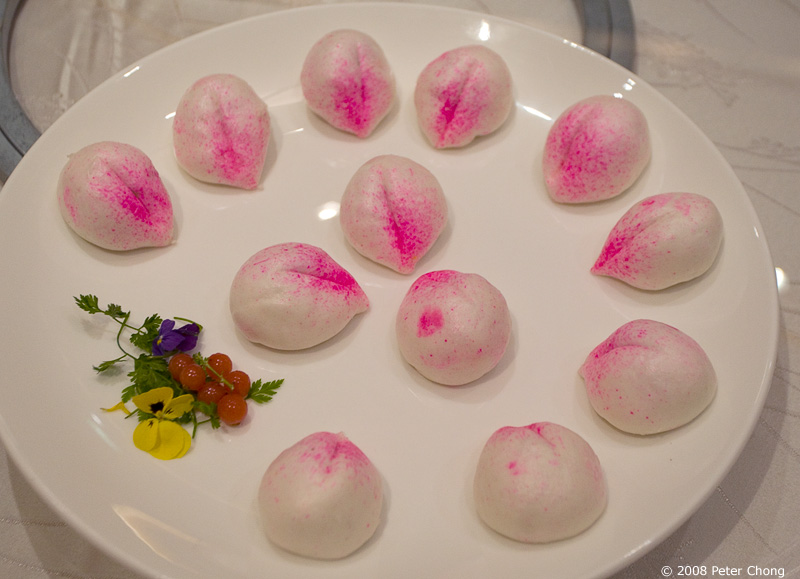
Detail showing the egg yolk. The lotus seed paste filling was smooth, sweet but not overly so. The bread was lightly steamed, so was fluffy.
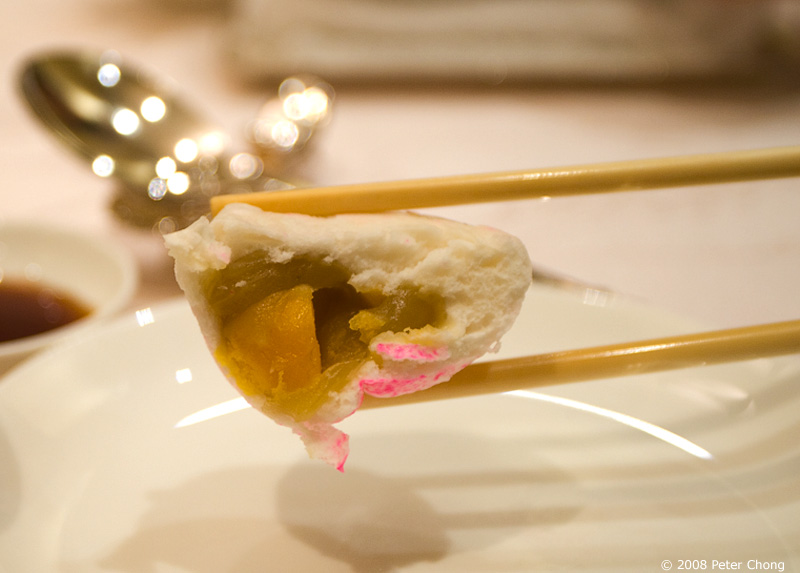
The starter was barbequed boneless whole suckling pig wiht preserved bean sauce. Presented deboned, but laying on the plate arranged like a pig:
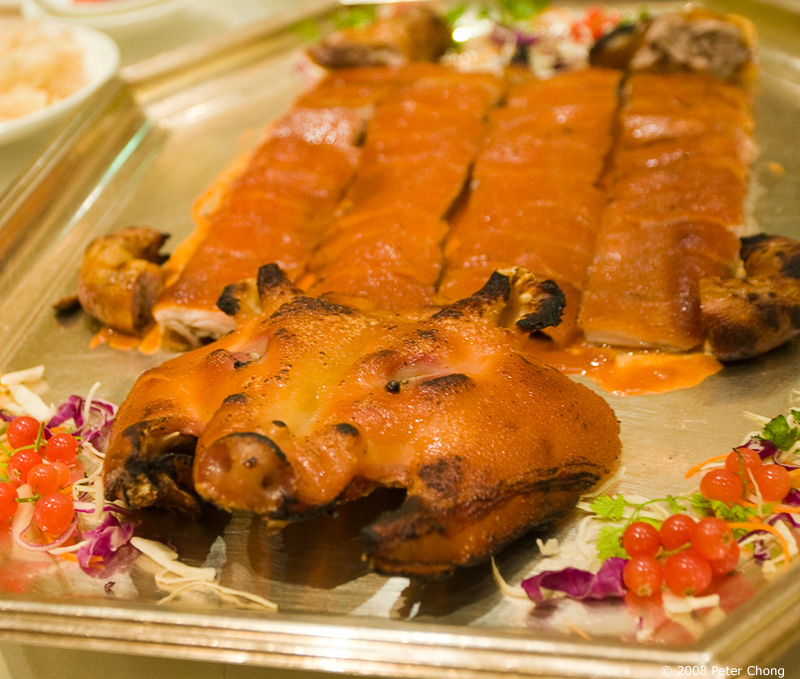
Detail showing the delicately roasted, crispy skin, a small layer of fat.
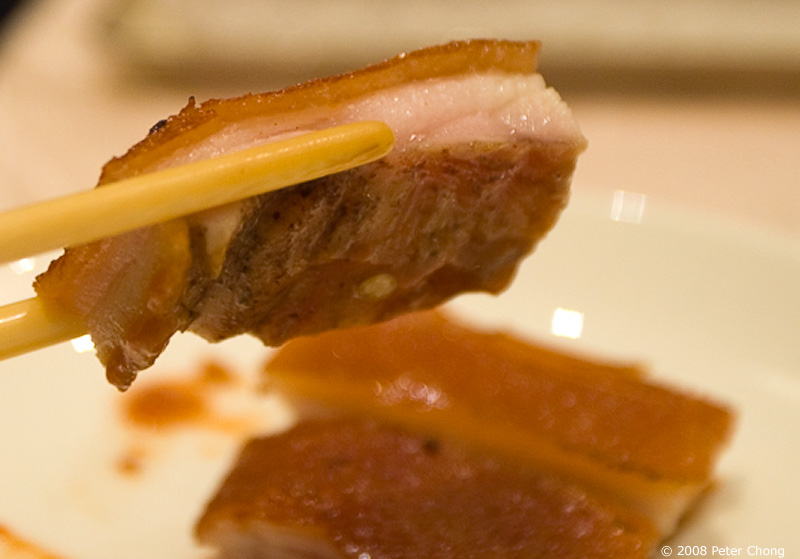
Then the entre, the main course was served. The Buddha Jumps over Wall or Fu Tiao Jiang as it is called is a seafood stew comprising of prized ingredients. The story goes that while the dish was being prepared, a passing Buddha, who is typically vegetarian, found it so wonderful that he jumped over the wall to sample the beautiful fragrance.

Served in a special porcelain pot, double boiled very slowly over a fire for many hours, the soup is made from the finest ingredients like sharks fin, whole abalone, chicken stock, sea cucumber, pig tendon, etc.
Typically this is the most expensive dish in a menu. A serving good for 10 people normally costs in the region of S$1000, and comprises of layers after layers of the good stuff. This version was no different. The broth was very fragrant and rich. The initial taste is that of a rich stock, but a bit bland. It takes a moment before the depth of the taste begins to develop. The palate then reveals the more complex flavours as the abalone, sharks fin, cured ham becomes more apparent.

The thrid course was sauteed fresh scallops and shrimps with asparagus. This dish had a delicate sauce, allowing the chef to show the fresh scallops and prawns in good stead. He had first singed both the fresh scallop and the prawn (yes, the menu described them as shrimps, but at this size, I think they should be called prawns), so there was fragrant wok hei.
The wok hei is a characteristic in Chinese stir fry cooking and is only possible in a commercial kitchen with the necessary high powered stoves. A typical stove is usually equipped with several, sometimes up to 6 jet like nozzles, where a mixture of kerosine and compressed air is injected. The resulting jet, is not unlike what gives the thrust on a jetplane, a very powerful, and intense flame. As such, most Chinese Chefs are male, as such a flame requires the cook to move the food at high speed, and often requires flipping the heavy wok...requiring much physical strength. A typical stove like this can generate some 150,000 BTU/hr. In comparison a regular home stove generates no more than 15,000 BTW/hr.
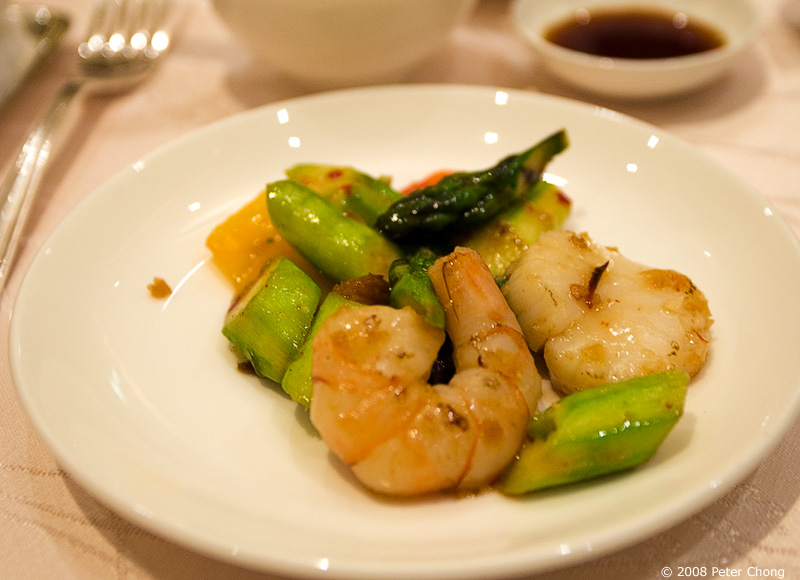
The next dish was the deep fried fillet of garoupa roll topped with crabmeat sauce.
The sauce was light, but had wat tan, a technique where a raw egg is beaten into hot gravy, cooking it in the process and creates floating streams of egg white and yolk within the sauce. This technique is commonly used also for hor fun. Crab meat and eggs were liberally scattered in the sauce.
The garoupa was fresh, and quickly deepfried so that it retains a succulent meat within a slightly crispy outer layer.

The chicken dish was the pompously named "Imperial Chicken with Ginseng". This was one of "jiak por" dishes...heaty, but nourishing. The presence of the ginseng imparted a bitter aftertaste to the chicken, which was poached.

Vegetables came served like a ying yang sign, signifying harmony. Baby pai chai were stir fried, and completely drenched in a rich, thick gravy of crabmeeat and shredded dried scallops. I personally liked this dish very much. The crunchy vegetables contrasted nicely with the smothering gravy, and the rich taste of the crab and scallops.
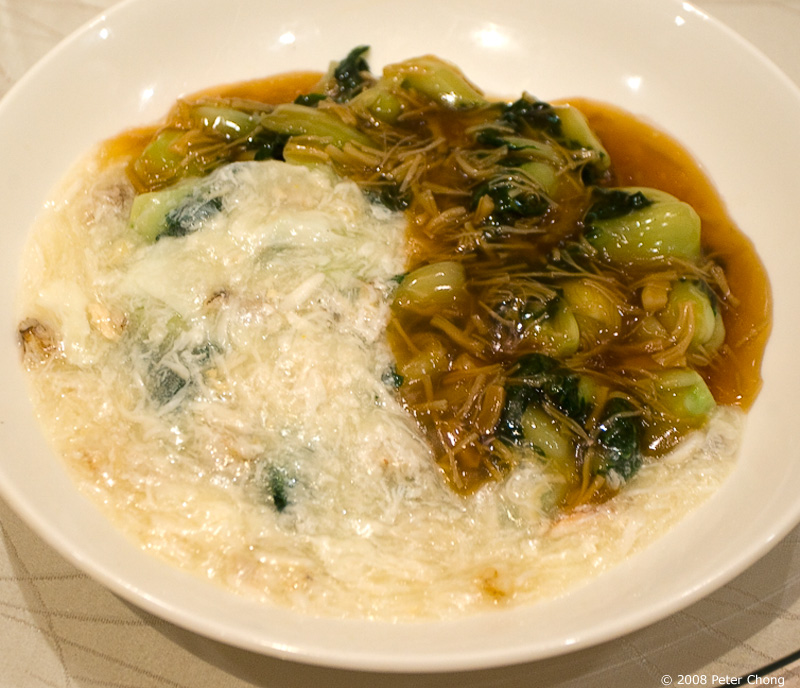
And for starch, as if, after a meal like this, we still needed more starch...was fried rice vermicelli (bee hoon) with seafood. This was also very well done, with good wok hei and a very fragrant gravy.

Dessert was a mixed platter of fresh fruits.
No comments:
Post a Comment